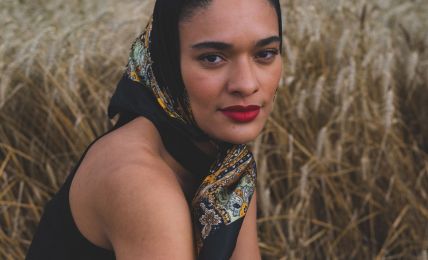We had the good fortune of connecting with Kyūka Kanesaka and we’ve shared our conversation below.
Hi Kyūka, how does your business help the community?
I first started the Kanesaka Yukari-Kai Japanese Kimekomi Doll Academy in the late 1970s. At that time, learning Japanese traditional arts was very exclusive to those who were Japanese (born and raised in Japan before immigrating to the United States). I began learning how to make Kimekomi dolls at a young age and earned my professor’s degree from the Kyūgetsu Doll Academy, headquartered in Tokyo, Japan. Due to the exclusivity of Kimekomi doll-making in the Los Angeles area, I decided to open my own academy to create a safe space that promotes diversity, equity, and inclusion.
My first students, many of whom remained with me until their passing, were Japanese and Japanese-Americans who had been sent to concentration camps in the United States during World War II. Upon their release, many sought to reconnect with their culture and find a sense of community. However, since they could not speak or understand Japanese, many doll teachers in Los Angeles did not welcome them into their classes. I had the honor of teaching and mentoring this generation, who had endured countless hardships and the loss of their civil rights and properties. My students found a community through the doll classes, a time to come together not only to make dolls but also to celebrate joyous times and provide comfort during sorrow. My classes became a way to heal wartime pains while introducing and educating American communities about the rich traditions of Japan.
Japanese Kimekomi dolls (“ki” means wood, “me” means grooves, and “komi” is the technique of applying fabric into the grooves) originated in 18th-century Kyoto, Japan. They were first crafted by Tadashige Takahashi, a priest at Kamo Shrine. Made from willow wood and dressed in fabric scraps tucked into grooves carved into the wood, these dolls were initially used for shrine festivals. Over time, the art evolved to incorporate modern materials like paulownia wood and silk. Kimekomi dolls, recognized for their intricate designs and cultural significance, remain a cherished traditional Japanese craft.
Alright, so let’s move onto what keeps you busy professionally?
As mentioned before, Kimekomi dolls date back to the Early Modern Period of Japan (1603-1868). Originally, their bodies were carved from willow tree branches that lined the Kamo River in Kyoto. During the Modern Period (post-1868), Kimekomi dolls underwent a major transformation. To appeal to amateur hobbyists, doll bodies were created using a mixture of sawdust and glue pressed into molds, drastically reducing the cost of learning the art form and increasing awareness of Kimekomi doll making throughout Japan.
Often, during exhibits, we hear comments such as “Oh, these are just made from kits,” or “I learned how to make one in the past, so there’s no need to go to class.” While this may be true for some, each doll requires a different skill set to create. The art form is ever-evolving, adopting new techniques for students to master. It’s also about learning the unique story behind each doll, steeped in the rich history of Japanese culture and traditions. Depending on the doll, the costume varies, and it is my job as an instructor to understand how the costumes are dressed and how they should drape upon the body. This image is then transferred into the doll as we make it.
I am also one of the few instructors in the United States who creates original Kimekomi dolls from scratch, not from a kit. My pieces draw inspiration from my journey as a Japanese-American woman, blending the two cultures. Over my career, I have instructed well over 150 students in the United States and credentialed over 30 students in the art of Kimekomi dolls. I am thrilled that my original students, those who were sent to Japanese and Japanese-American internment camps during World War II, found refuge and solidarity in my classes while learning about their heritage.
I am also proud of my son, Kyūkyōka Kanesaka, who accompanied me as a child when I taught doll making. He is one of the very few, if not the only, Kimekomi doll artists of his generation in the United States who can also create original Kimekomi dolls. He is currently carrying on the art form through his studios in Northern and Southern California and Virginia, and also online. Additionally, he is one of the only artists in the United States who can create his own faces by applying “gofun” (an oyster paste that is layered to create that “porcelain” finish) and painting his own faces.
If you had a friend visiting you, what are some of the local spots you’d want to take them around to?
If I had to show a friend visiting me around Los Angeles, one of the events I would love them to experience is Nisei Week, usually held on the second and third weekends of August. Nisei Week is one of the oldest running ethnic festivals in the United States, celebrating its 82nd year in 2024 (it was halted only twice, once during World War II and again during COVID). My students display Kimekomi dolls during Nisei Week, allowing us to share the rich and beautiful art form and history of Japan with our community.
Nisei Week takes place in Little Tokyo, one of only three remaining Japantowns in the United States, the other two being in San Francisco and San Jose. It is crucial for us to keep Japanese traditions alive in Los Angeles, as they might otherwise disappear. Little Tokyo offers many wonderful places to eat and the opportunity to visit the Japanese American National Museum, which preserves the stories and artifacts of those who were sent to internment camps during World War II.
Additionally, I would love to take my friend to the Huntington Library and Gardens. There are many different gardens to explore, especially the Japanese house that dates back to the Early Modern Period. It is important for us to constantly preserve and share our rich heritage with the next generation.
The Shoutout series is all about recognizing that our success and where we are in life is at least somewhat thanks to the efforts, support, mentorship, love and encouragement of others. So is there someone that you want to dedicate your shoutout to?
First, I want to thank my mother, Mary Yukiko Sugino. After my father passed away, she immigrated back to Hawaii and raised her children as a single mother. She is my source of inspiration and motivation to pursue the arts. She always wanted her children and grandchildren to learn some aspects of Japanese culture while being raised in America. Although we did not have much growing up, she encouraged my artistic creativity and has inspired my own children, especially my youngest son Kirk Kanesaka (Nakamura Gankyō).
Second, I want to thank all of my students who dedicated their spare time to learning the art of Kimekomi doll making. I cannot list all of them, but especially Elsa Okuda, Kim Tanaka, Shiz Okuda, and Mutsuko Ikeda, all of whom were sent to Japanese-American internment camps. They dedicated their lives to learning Kimekomi doll making when I first started teaching and journeyed with me across the United States to various Japanese festivals, such as the St. Louis Botanical Garden’s Japanese Festival and Nisei Week in Little Tokyo, Los Angeles. Without their dedication, I am not sure if I could have continued teaching Kimekomi dolls.
Website: www.yukari-kai.com
Instagram: kanesakayukarikai
Facebook: kanesakayukarikai
Image Credits
Kanesaka Yukari-Kai






